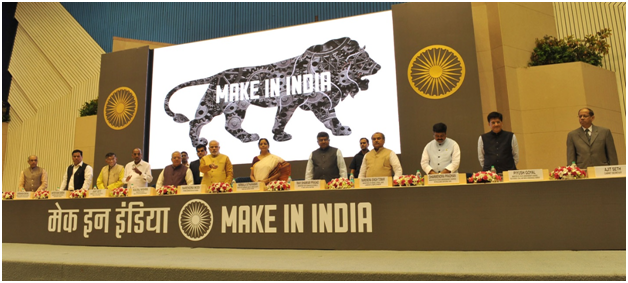Make in India is an ambitious initiative launched by the Government of India in September 2014 with the vision of transforming the country into a global manufacturing and investment hub. This groundbreaking campaign aims to foster innovation, enhance job creation, and promote economic growth by encouraging domestic and foreign companies to manufacture their products in India. In this deep dive blog, we will explore the various facets of Make in India, its objectives, achievements, challenges, and its impact on India's economy and global competitiveness.
I. Objectives of Make in India:
The Make in India campaign sets out to achieve several key objectives, including:
1. Boosting Manufacturing: The initiative aims to increase the share of manufacturing in India's GDP and create job opportunities, especially in labor-intensive sectors, by attracting investments and facilitating ease of doing business.
2. Encouraging Innovation and R&D: Make in India seeks to foster innovation, research and development (R&D), and technology upgradation in various sectors, enabling indigenous manufacturing capabilities and reducing dependence on imports.
3. Simplifying Business Processes: The campaign aims to streamline bureaucratic procedures, simplify regulatory frameworks, and reduce red tape to make India an attractive destination for businesses.
4. Fostering Foreign Direct Investment (FDI): Make in India strives to attract foreign companies to invest in India's manufacturing sector through various policy reforms, tax incentives, and infrastructure development.
II. Achievements and Impact:
Since its inception, the Make in India initiative has achieved notable milestones and made a significant impact on India's economy:
1. Increased FDI: Make in India has played a pivotal role in attracting foreign direct investment. The FDI equity inflow into India has seen a substantial increase, reflecting the confidence of global investors in India's manufacturing capabilities and business-friendly environment.
2. Growth of Manufacturing Sector: The campaign has contributed to the growth of the manufacturing sector, driving industrial production, and expanding employment opportunities across various industries.
3. Thriving Start-up Ecosystem: Make in India has stimulated the growth of India's start-up ecosystem, particularly in sectors like technology, electronics, and manufacturing. It has fostered entrepreneurship and innovation, creating a conducive environment for aspiring entrepreneurs and supporting their endeavors.
4. Skill Development: Make in India recognizes the importance of skill development and vocational training to meet the demands of a competitive manufacturing sector. It has led to the establishment of numerous skill development programs to enhance the employability of the Indian workforce.
III. Challenges and the Road Ahead:
While Make in India has achieved significant success, it faces certain challenges that need to be addressed for sustained growth:
1. Infrastructural Development: Adequate infrastructure, such as transportation, logistics, and power supply, is crucial for the success of the manufacturing sector. Continued focus on infrastructure development is essential to support manufacturing activities and attract investments.
2. Ease of Doing Business: Despite efforts to improve the ease of doing business, India still faces bureaucratic hurdles, complex regulations, and lengthy approval processes. Further reforms are necessary to create a more business-friendly environment and enhance competitiveness.
3. Skill Gap: The manufacturing sector requires a skilled workforce with specialized technical knowledge. Bridging the skill gap through comprehensive training programs and educational reforms is vital for ensuring a sustainable talent pool.
IV. Sector-wise Opportunities:
Make in India has identified various sectors with immense potential for growth and investment:
1. Automotive and Auto Components
2. Electronics and Information Technology
3. Pharmaceuticals and Medical Devices
4. Textiles and Garments
5. Renewable Energy
6. Aerospace and Defense
7. Chemicals and Petrochemicals
8. Food Processing and Agribusiness
Conclusion:
Make in India has emerged as a game-changing initiative, propelling India towards becoming a global manufacturing powerhouse. Through its focus on manufacturing, innovation, and ease of doing business, it has garnered significant investments, generated employment opportunities, and fostered economic growth. While challenges remain, sustained efforts, policy reforms, and strategic collaborations will further strengthen India's position on the global manufacturing map, bringing prosperity and enhancing the nation's competitiveness.



0 Comments